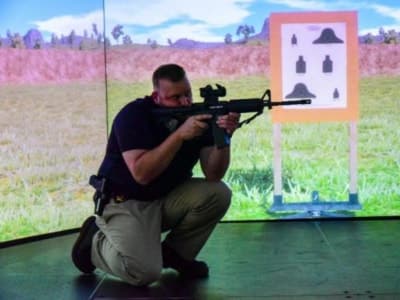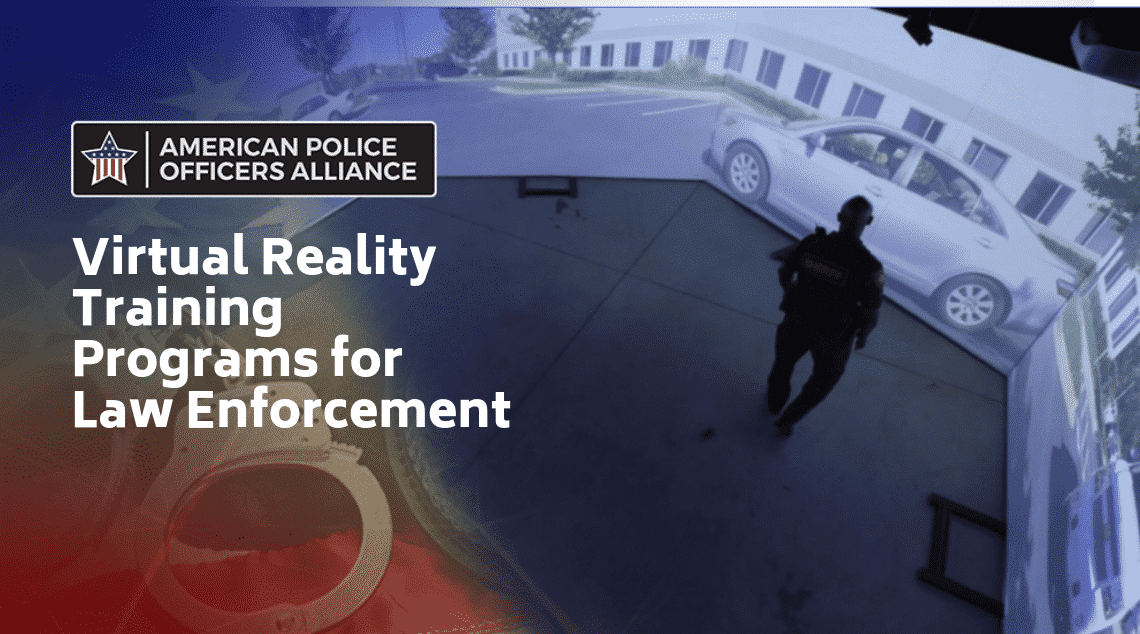With the 2018 elections completed, American Police Officers Alliance returns our attention to the broader world of law enforcement. In this post, we continue our look at how advances in technology can support modern police work. One of the most difficult situations for a law enforcement officer to confront is evaluating use of force. Several companies are working with police departments to pilot virtual training systems that can better prepare law enforcement officers for hazardous situations that require quick reflexes and split-second judgement.
In Florida, Meggit Training Systems partnered with the Miami Police Department to launch a test of a new virtual training that allows law enforcement officers to safely participate in training simulations of real world dangerous scenarios. In Utah, VirTra training systems have been in use since 2017 for similar purposes.
This training is different than virtual reality (VR) in that it doesn’t require special VR goggles for participants to feel as if they’re in a different environment. The Meggit Fire Arms Training Systems (FATS) training takes place in a circle that is formed by placing 5 large flat screens side by side with a small entrance space. The screens display realistic environments and people and is combined with simulated weapons that feel and function (including recoil) like real-world weapons. With surround sound audio, directional noises are used to increase stress level. The system tracks weapon movement and can report or replay the training session.
The VirTra system measures tone of voice and reactions while tracking accuracy and reaction time. It also captures weapon hold and target dwell time, as well as trigger discipline and recoil recovery. The system can also change scenario time, number of shots fired “at” police, and initiate weapon jams. In addition to the simulation, VirTra has a device that can be worn by training participants that send shocks to the trainee to simulate injuries.
 This training can be used for a variety of common, high-pressure real-world situations including domestic disputes, traffic stops and school shootings. Simulated weapons used during training include rifles, pistols, machine guns, Tasers, and pepper spray. Law enforcement officers can repeatedly train to improve reaction time and decision-making without risk of injury.
This training can be used for a variety of common, high-pressure real-world situations including domestic disputes, traffic stops and school shootings. Simulated weapons used during training include rifles, pistols, machine guns, Tasers, and pepper spray. Law enforcement officers can repeatedly train to improve reaction time and decision-making without risk of injury.
Proponents of the training note that marksmanship, judgement, legal training, and de-escalation skills can all improve after proper use. Equally as important as the “live” training are after-action reviews of trading sessions where police trainees and veterans alike have reported learning and even seeing things they didn’t think happen, such as hitting non-threatening targets to better train them for real-world situations. Some police departments have considered using the training for community outreach to show leaders what difficult situations law enforcement officers face to support efforts to strengthen community relationships and improve the current perceptions of police use of force decisions.
While many officers see the value in virtual training, some resist because they feel it is not real enough or they have concerns that repeating simulations will be predictable and not productive. The makers of these systems and law enforcement officers who support the training believe it is up to trainers to manage these expectations and up to police to be willing to try new methods for the best outcome. Those officers who see the benefits have noted that the immersive nature the training is more realistic and valuable. Some have reported that scenarios feel real enough to get their heart racing during tense situations.
Training simulations go as far back as paper targets and have evolved from videos that prompt shoot/no-shoot evaluations to the current virtual training being piloted in Miami. Future technologies appear to be where the defense industry is experimenting, in VR and Augmented Reality (AR) where screen or goggles project virtual people over real world environments. Those technologies need to catch up to the quality of virtue training using large screens, but it will not be long before they do. As with any technology, it’s benefit is only in the appropriate use and ability to create knowledge and skills that translate to real life situations. Virtual training is promising and if used the right way can help diffuse and prevent life threatening situations, helping both law enforcement officers and the communities they serve to be safer and more secure.








